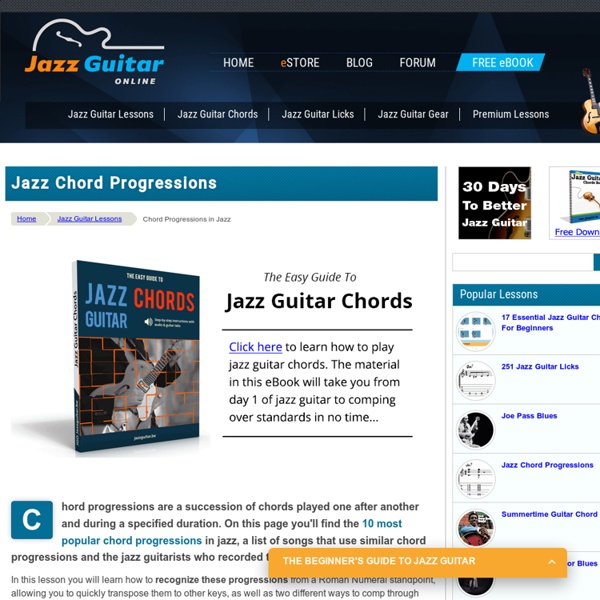The 10 Most Popular Jazz Chord Progressions + Examples

Image:All of me.gif - Djangopedia
Gypsy Jazz Course | Gypsy Jazz Accompaniment Course
Master authentic la pompe accompaniment as played by Django Reinhardt by an easy method that breaks la pompe into small steps to make it much simpler to understand and perform - this is the time to play proper SWING GROOVE! Learn all the basic chord shapes and chord progressions used by Django and other great Gypsy players with cool rhythm variations and kicks - “the real thing” - in a 4.5 hour long course!! Special bonus - Six “Accompaniment Mastery” play-along tracks to master the swing groove just like in real life, including: Minor Blues, 12 Bar Blues, Rose Room, Swing Gitan, Les Yeux Noir (Dark Eyes) and more... Important - This course contains lessons 1,2,3 from my previous site. Here are some testimonials about the 1st version of this course "I have struggled for a while to learn La Pompe. After Learning This Course: You will be able to play la pompe accompaniment with a perfect swing accent. You will be able to play la pompe as played by Django Reinhardt and others.
Gypsy Jazz Guitar - Introduction To Arpeggios And Picking
One of the things that attracts me to the Gypsy swing style is that it has a systematic technical method. Before I started to play Django style, none of my teachers talked to me about technique or how to improve my sound. I noticed that every guitarist has a different way of playing and I remember myself changing the way I played every few months. Things are different when you learn to play the Gypsy jazz style. In this lesson you will learn: The “rest stroke” picking technique.Minor 9 and diminished arpeggios.How to use these arpeggios over the Minor Swing chord progression. I strongly recommend that you practice the arpeggios slowly in order to master the rest stroke picking technique. Video Rest Stroke Picking Rest stroke picking consists of two important movements: The downstroke – use your elbow to play the downstroke (your wrist should be locked)! Minor and Diminished Arpeggio Shapes Here are the arpeggio shapes used in this lesson. Minor Swing Chord Progression Backing Track
Related:
Related:



